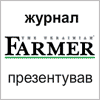Where will Ukraine store its grain?

It is hard to export in a war—and there is nowhere to put it.
Ukraine provides 10% of the world’s wheat, 16% of its maize and roughly half of its sunflower oil. But the war has made it difficult to get the stuff out. In peacetime the country exported 6m tonnes of grain per month, most of which went through ports on the Black Sea. But a Russian naval blockade, and waters littered with Ukrainian defensive mines, have halted that trade. Rail, road and river routes can carry less than 2m tonnes per month. This means stockpiles are running up, and the problem is about to get worse. In June the wheat planted in winter turns firm and golden. But one-fifth of Ukraine’s grain elevators, or storage facilities, have been damaged in attacks, or lie in Russian-occupied territories. And the country already has a backlog of more than 20m tonnes of trapped grain from last season, says Taras Vysotsky, the deputy agriculture minister. What will farmers do with the new harvest?
Farmers in southern Ukraine have already started to harvest winter crops; those in other regions will follow soon. Although this year’s production is expected to fall by one-third, Ukraine’s Grain Association, an industry body, still expects an annual harvest of 26m tonnes of maize, 19m tonnes of wheat, 7m tonnes of barley and 13m tonnes of oilseeds. Some farmers would rather hoard grain in the hope that ports will eventually reopen than see expensive transit to Poland or Romania eat into their margins. The government reckons Ukraine will lack 10-15m tonnes’ worth of suitable storage this year. The Grain Association thinks the gap could be as high as 25m tonnes.
Crops that are not stored could rot or be stolen. To avoid that, farmers are scrambling to secure silo bags—long polyurethane sleeves that can hold around 200 tonnes of grain each. Mr Vysotsky estimates that around 50,000 would be needed to take all the excess. The government is also ordering mobile storage facilities, which can be set up in fields to shelter grain from the elements and pests. Smaller producers, meanwhile, are cutting deals to rent space in warehouses. But they have often not been certified by the state, and usually lack industrial drying machines, which exposes crops to the risk of spoiling. Maize can also be left in the fields during the winter, although at a risk to quality and yield. Western allies, confronting soaring global food prices, have offered to help. On June 14th Joe Biden, America’s president, promised to build temporary silos on Poland’s border with Ukraine. This could offer some respite in time for the maize harvest, which starts in September. But the “main challenge now is to physically cross the border,” says Mr Vysotsky.
Such remedies can anyway only be partial—and expensive. Anticipating higher logistics costs, some Ukrainian farmers are rethinking their mix of crops in favour of more profitable varieties. Bogdan Kostetsky, founder of Barva Invest, an agricultural consultancy near Kyiv, says farmers have already replaced around one-third of their low-margin maize with rape and sunflower seeds. Others may decide to sit out the next season altogether. As well as choking export revenue and putting up the price of fertiliser, the war has left farmers with destroyed machinery and cut them off from fields in occupied territories. Ivan Miroshnichenko, a wheat farmer in Oleksandriya, a four-hour drive south-east of Kyiv, says he has little hope. “When a farmer sees he is making a loss, that his storage is full, that there is no light at the end of the tunnel…he will reconsider if he should plant at all.”
IC UAC according to The Economist
- 2181 reads








